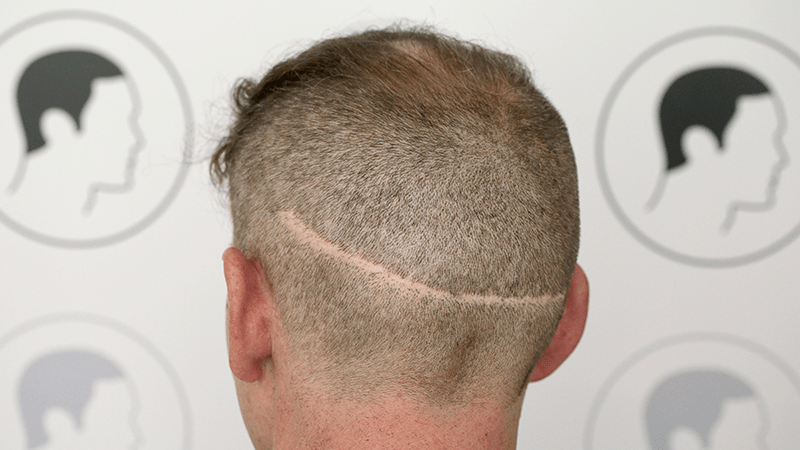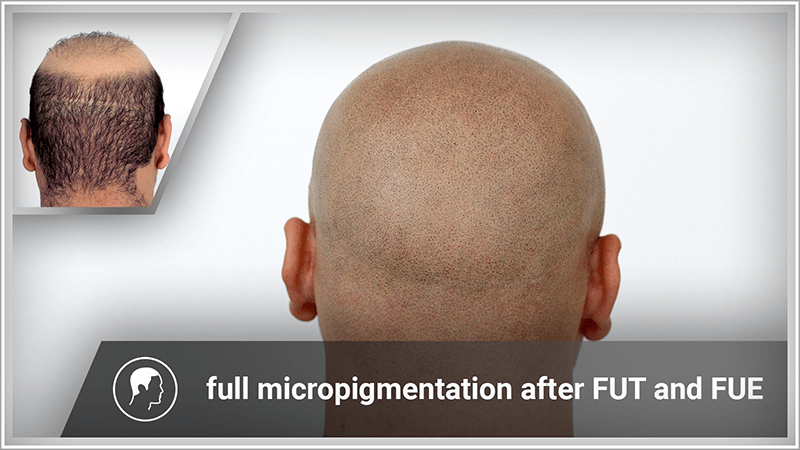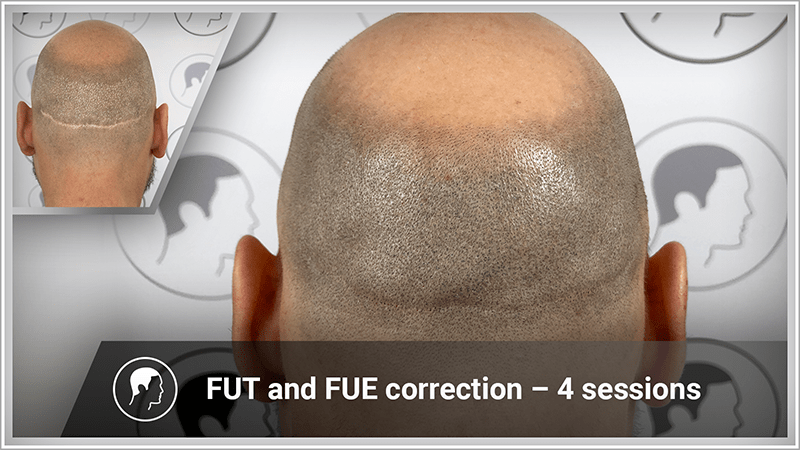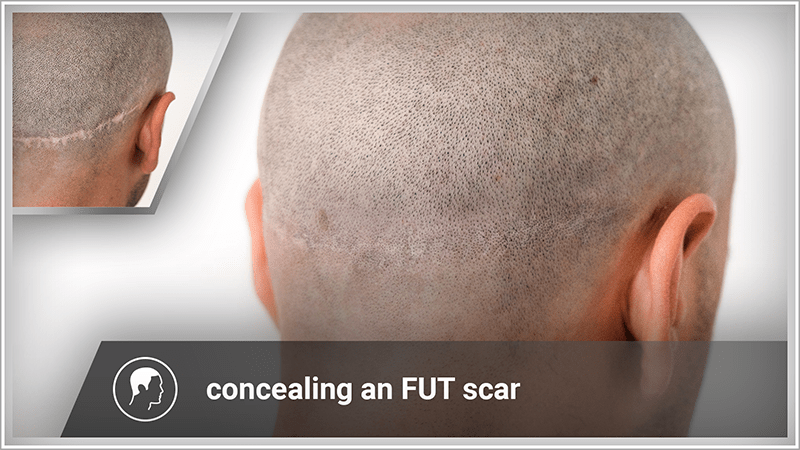Around 60 to 80 percent of all men in Europe will suffer from hereditary hair loss at some point in their lives. The onset of hair loss varies from person to person. Some men go bald in their early twenties, whilst others don’t see the first signs until they’re in their fifties. The typical progression of hair loss begins with a receding hairline, later followed by a bald patch at the back of the head – the so-called ‘tonsure’. Eventually the receding hairline merges with the tonsure until only a ring of hair is left. If the hair loss continues, it can lead to total baldness. In women, androgenetic hair loss takes a different course. Women rarely go entirely bald.
What types of hair transplant are there?
There are two different types of hair transplant:
FUE: Follicular Unit Extraction
FUT: Follicular Unit Transplantation
In FUE, which is a more modern procedure, hair roots are removed individually and re-implanted into areas affected by hair loss. The process is more labour-intensive and therefore more expensive. One advantage is that it doesn’t leave any large wounds or scars, meaning the healing process only takes a few weeks. The so-called FUT strip method is an older procedure which tends not to be used anymore. It involves removing a strip of skin, along with its hair roots, from the back of the head. The hair roots are separated from this strip and later implanted into the affected areas. The donor site is then closed up with stitches.
FUT hair transplant: what the procedure involves
The goal of a hair transplant is to preserve as many follicular units as possible. These units are also known as grafts. In FUT, a strip of skin is surgically removed. The strip is around 1cm wide and around 10 to 30cm long. Every square centimetre of hair yields about 60 to 120 grafts. Each of these follicular units has one to four hairs growing from it.
The donor site is shaved beforehand, but you don’t have to have your whole head shaved. Once the skin has been removed, the grafts are prepared for transplantation to stop them dying. They can then be inserted into the areas affected by hair loss. In preparation for this, so-called ‘slits’ are made in the patient’s scalp. These are tiny incisions about the size of a pore. When implanting the grafts, care is taken to preserve the patient’s natural appearance and to match the direction of growth of the existing hair.
After the hair transplant – what happens next?
Compared to FUE, FUT is a more invasive operation which takes much longer to heal. This is due to the large scar on the back of the head where the skin has been removed. That’s why you need to avoid exercise for quite a while after your hair transplant, and follow your clinic’s haircare instructions to the letter.
What are the disadvantages of a hair transplant?
A hair transplant is not suitable for everyone affected by hair loss. Your chances of a successful hair transplant are better if you have hereditary hair loss that is not too advanced, and if you are not too young. A hair transplant won’t work if you suffer from alopecia areata, because this condition causes the body to attack its own hair roots, so it would attack the transplanted hair roots too.
There are also a few other things you need to be aware of: with a hair transplant, you sometimes find that individual hair roots die off and no new hair grows from them. With a high enough hair density, however, this is not usually too noticeable. The strip scar on the donor site remains visible.
Last but not least, a hair transplant is expensive. If you want the transplant to cover a large area of your scalp, it can cost up to several thousand euros. Before you invest in a hair transplant, consider the following: for most people, an FUT hair transplant cannot restore the appearance of full hair (or can only do so in a very limited way). Patients are often extremely unhappy with the results, and feel the treatment has not been worthwhile.
Scalp micropigmentation is the ideal supplement to a hair transplant
Are you frustrated and unhappy with the results of your FUT hair transplant? Then we can help you with a gentle, non-surgical procedure: with scalp micropigmentation, you can optimise the results of your hair transplant. During the procedure we apply pigments into your scalp to create the illusion of a full head of hair. It looks completely natural and will do wonders for your self-confidence! What’s more, scalp micropigmentation is the only treatment method that can completely conceal an unsightly FUT surgical scar!
Do you want to find out more about scalp micropigmentation and your own options?
Then call or message us today!






